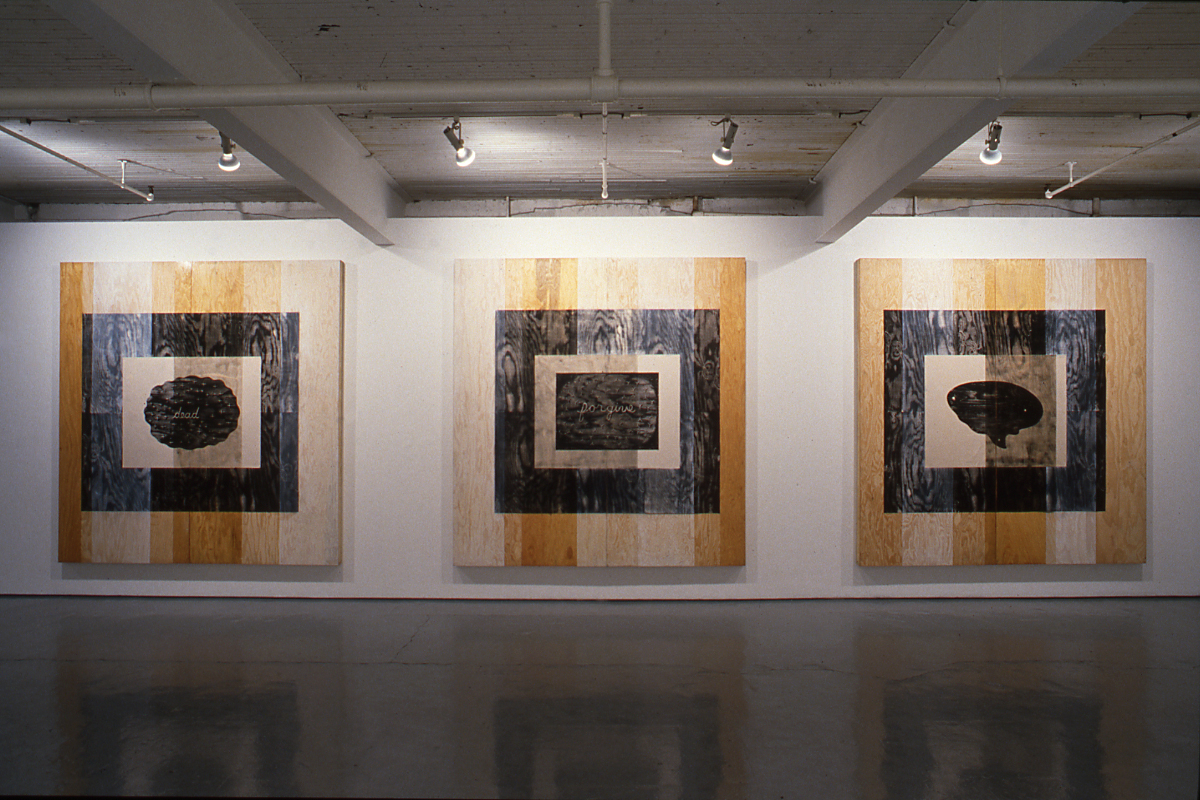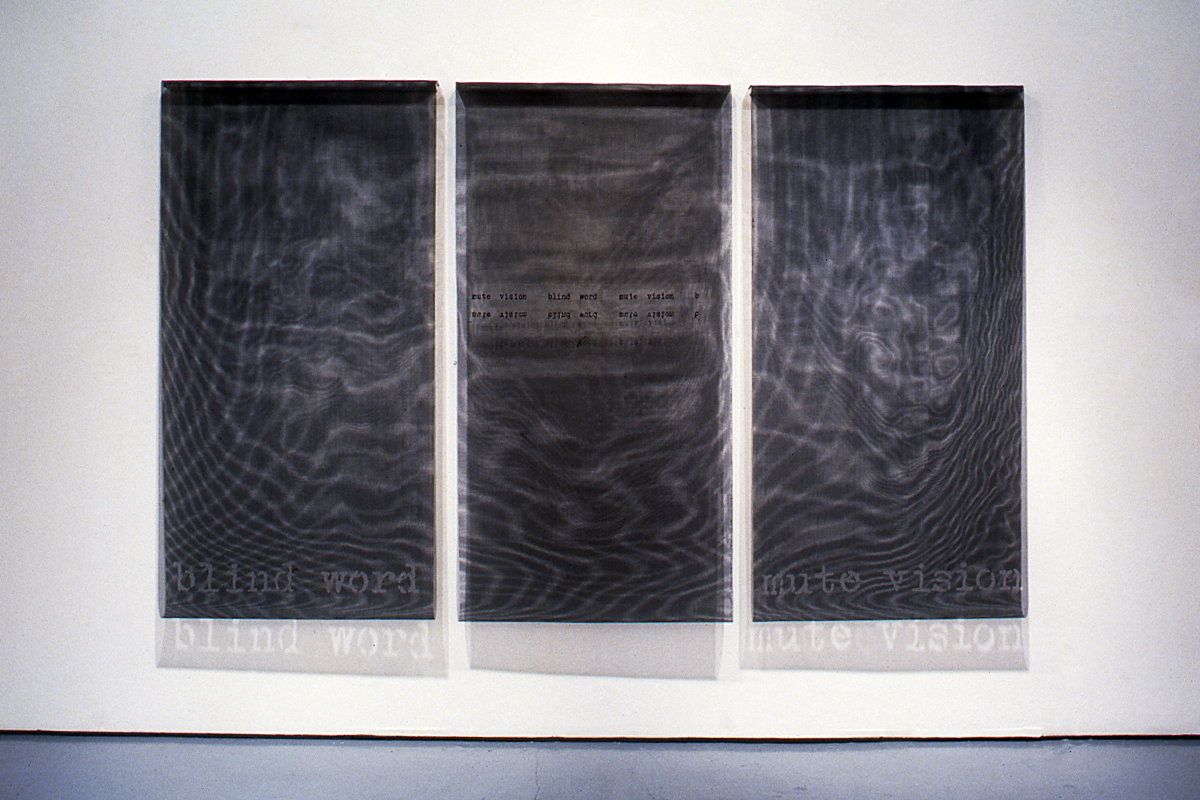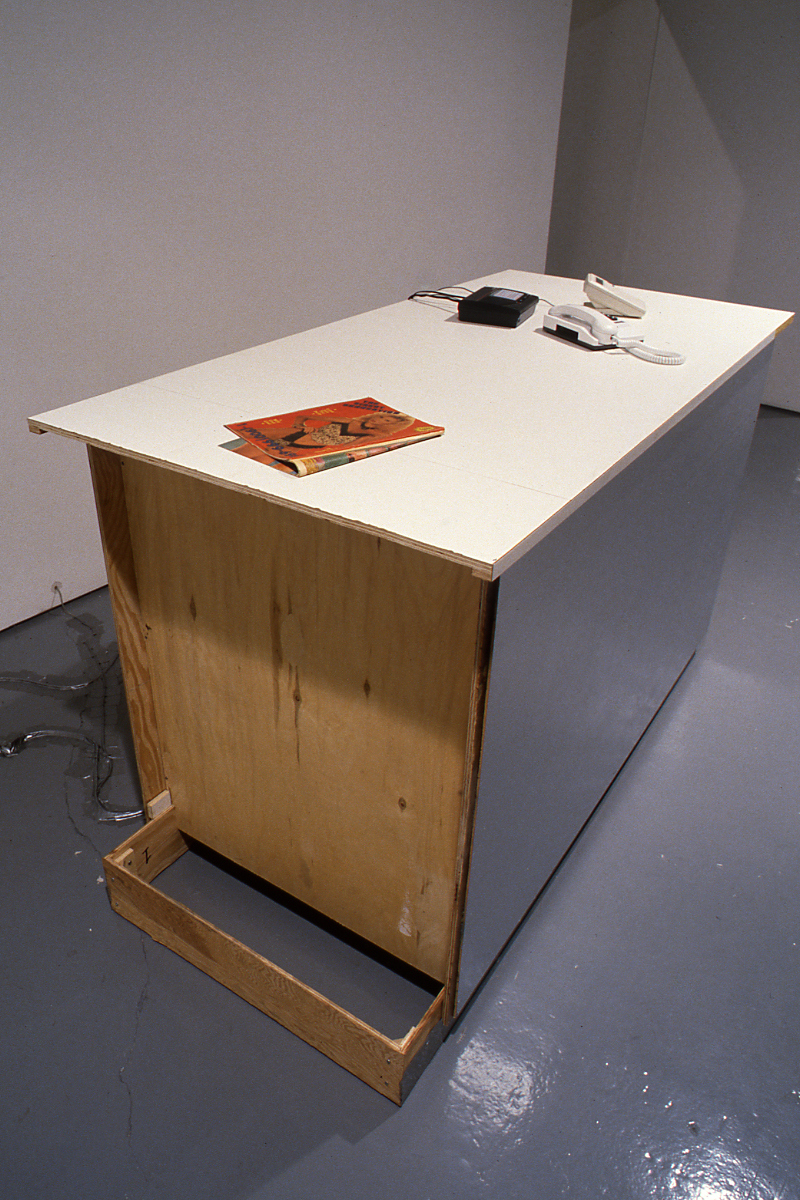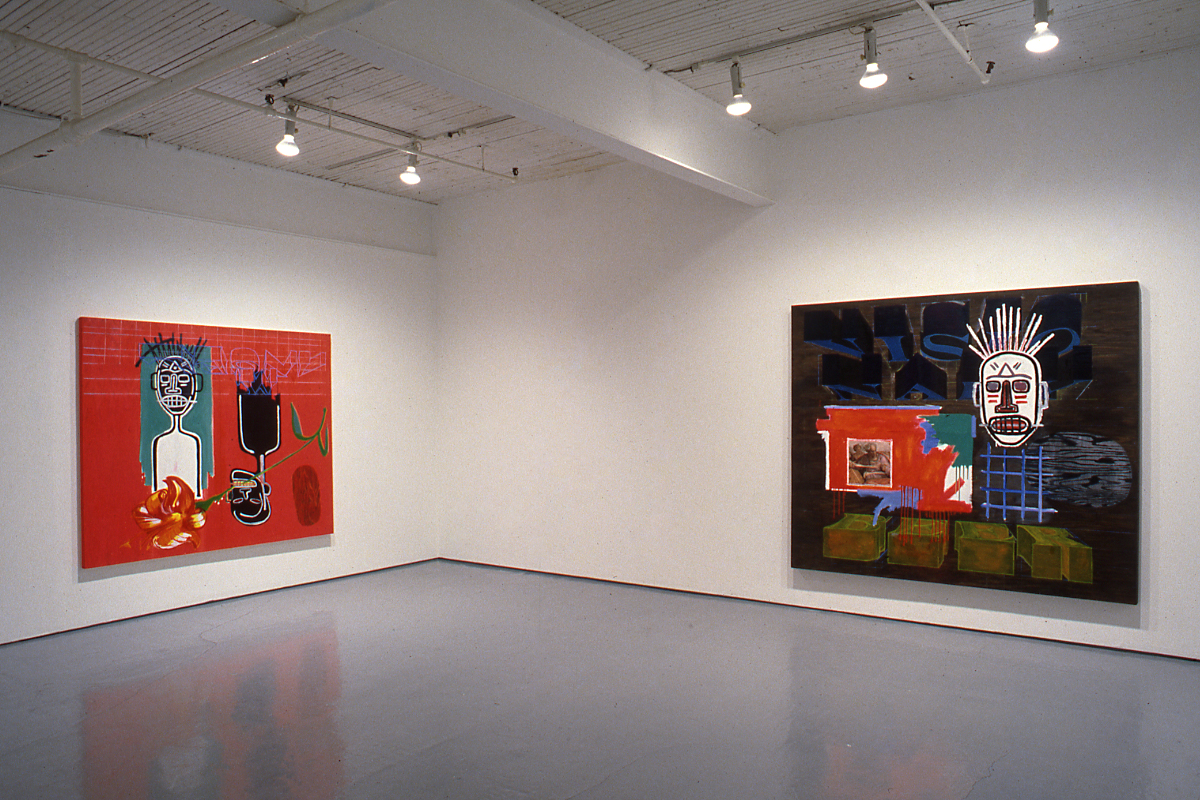East and West Galleries:
Mercer Union a centre for contemporary art is pleased to present, Union Language, an exhibition of collaborative works by a select group of Toronto artists.
Union Language will include works by artists involved in contemporary design, architecture and visual art. Curator Ihor Holublzky and visual artist Regan Morris have collaborated in their invitations to artists who are producing work for the exhibition. The artists participating in Union Language are: Therése Bolliger/ Colette Whiten, Robert Flack/Chrlstian Morrison, Oliver Girling/Roland Jean, Ian Carr-Harris/Patricia Homonylo, Richard Banks/Tom Dean, Janice Gurney/Kim Maltman.
A panel discussing collaborative process is planned to accompany the exhibition. Union Language opens September 5th and runs to October 5th, 1991.
Grace Murao
Extension Vol. 1, No. 2, Fall 1991
Calling themselves "enlightened entrepreneurs" who "initiate collaborative ventures rather than uncovering existing works under a defined curatorial agenda", Ihor Holubizky and Regan Morris approached several artists with the mandate of choosing another artist with whom each could work. This opened-ended proposition spawned works by Therése Bolliger with Colette Whiten, Janice Gurney with Kim Maltman, Robert Flack with Christian Morrison, Ian Carr-Harris with Patricia Homonylo, Richard Banks with Tom Dean, and Oliver Girling with Roland Jean. The works in the exhibition utilize a variety of media and, aside from some superficial similarities, there appears to be very little which links one effort to the other, except that each pair of artists partidpated in a prccess of collaboration.
While the quality of the overall exhibition is uneven, it is important to keep in mind that these works are products of a collaborative process and that the success of each effort can be measured on one level by the extent to which each artist's contribution is integrated in the final product. Taking this criterion into account, of the six groups of work in the exhibition, the pieces by Therese Bolliger with Colette Whiten, and Janice Gurney with Kim Maltman are the most successful.
Both Therése Bolliger and Colette Whiten have worked with sculpture. Recently Bolliger has been involved with drawing and Whiten has used the traditional media of needlework to depict political images. Their joint contribution to Union Language, which could best be described as a drawing/sculpture, is entitled, Blind Word Mute Vision. Their piece consists of three lengths of black wire mesh draped loosely, folded in two and suspended at the top by a shallow wooden shelf. The centre panel displays the text: "mute vision blind word mute vision b" and the mirror image of the same text is cross stitched directly underneath. The panel on the left has the words "blind word" cut from the top layer of the mesh and the panel on the right-side bears the words "mute vision" which have also been cut in the same manner. Not only do the words cast shadows on the walls directly behind them but the moire pattern which is produced by the layering of the wire mesh makes Blind Word Mute Vision a visually rich effort. Both artists interest in methods of expression were accommodated, making the collaboration between Therese Bolliger and Colette Whiten a good example of how two artists can work together to create a work which is just as powerful and thought-provoking as their own individual work.
Although their approach is very different, the same can be said about the piece by Janice Gurney and physicist and poet Kim Maltman entitled Harlow and the Technology of Love.
Their collaborative piece consists of several sets of information, including photographs that document behavioral experiments to do with mother and infant bonding using rhesus monkeys conducted by Harry and Margaret Harlow, juxtaposed with photographs of Jean Harlow, the Hollywood love goddess, a shelf with different types of glues and adhesives, a refrigerator cooling system, and a textual piece entitled The Affectional Systems, which is meant to be read like a poem. These groups of information interact to form a scathing commentary on the insidious ways that popular culture and science feed our negative stereotypes of women.
As a thesis for an exhibition, Union Language was a significant proposition because it flies in the face of a traditional stereotype of the artist struggling away in isolation. However, it is important for the viewer to be familiar with each artist's production in order to fully appreciate the pieces in the exhibition. Also, if there were some documentation of collaborative process, the audience could be more aware of the process and the dialogue that transpired to make the work possible. This additional information would have enhanced an already provocative exhibition.
Innovative collaborations create new language.
By DEIRDRE HANNA
NOW, September 12-18 1991
Mercer Union launches its fall season with an exciting experiment in collaboration.
Loosely co-ordinated: by: artist Regan Morris and, curator -lhor Holubizky, Union Language pairs some of the hottest names on thc Toronto art scene to see what happens when two people who have never worked together before join forces to create a single work of art.
Painter Richard Banks joins installation artist Tom Dean in three large paintings, painters Oliver Girling and Roland Jean team up for two works and sculptors Thérèse Bolliger and Collette Whiten create sedate wall sculpture.
Janice Gurney, who has long dealt in appropriated images creates her first true collaboration with poet/physicist Kim Maltman, photographer Robert Flack joins graphic designer Christian Morrison and sculptor and teacher Ian Carr-Harris works with a former student, Patricia Homonylo.
Once the collaborative partnerships were established the curators nurtured the laboratory feel to the creative process, steering clear and letting the artists joint concepts gel.
"We didn't want to see any of the works in progress." explains Holubizky, "because we didn't want to interfere. The"basic" selections we made were based on trust and respect"
The lineup alone makes for an impressive group show, but what makes Union Language especially intriguing is how the individual artists rose to the challenge of working within such artificial creative conditions.
Among the most powerful is Gurney and Maltman's disturbing Harlow And The Technology Of Love. In it, screen love goddess Jean Harlow is juxtaposed with scientist Harry Harlow, who in the 60s worked with rhesus monkeys in a series of sadistic studies on maternal bonding.
Heartbreaking photos of infant monkeys clinging to dubiously comforting surrogate "mothers" join images of the actor in her shimmering beauty, including a publicity still taken with Harlow's loving Christian Scientist mother who ultimately refused to take her dying daughter to hospital.
Scientific texts join poetry written for the installation. Sculptural elements include an assortment of glues with different bonding strengths, and a salvaged refrigerator pan that acts as a surrogate maternal unit .
All the pans neatly knit together to pose profound questions about faith and love.
Other highlights include Carr Harris and: Homonylo's 1-(900) 999-6969, which probes issues of vulnerability and accountability. Carr-Harris has constructed an over-sized, beat-up kitchen counter which holds a magazine sporting a phone sex ad with the titular phone number.
Homonylo builds her critique into the work with a telephone and answering machine that turn viewers into voyeurs when periodic incoming calls force gallery visitors to overhear private messages in progress. The phone numbers of the people calling in are displayed on a state of-the-art phone that raises further questions about privacy in the face of technology.
Flack and Morrison also drawing gallery visitors into their work, by offering stacks of attractive, cheaply produced two colour posters in lieu of a precious original image. Each of four posters features a computer manipulated image of Morrison's children engaged, in symbolic activities like the pagan marriage gesture' of handfasting, embellished with figures like flowers that are rich with fertility and life.
In all but one case, the artists working together knew each other but had never previously collaborated. The exception Girling and Jean's joint paintings go to show that fruitful projects can come from the pairing of strangers.
Jean's raw, voodoo-inspired imagery joins with Girling's solid, slick compositions in singularly coherent works. A lily held in a zombie's teeth, for example, invests the work with a poignant humour. While neither painter individually works on wood, for this project they used a plywood surface, drawing out the wood grain as a central part of the imagery.
As Morris observes, "In coming together they did something completely unfamiliar, and which works really well."
The success of Union Language and its hands-off curatorial process lies in happy discoveries like this.






